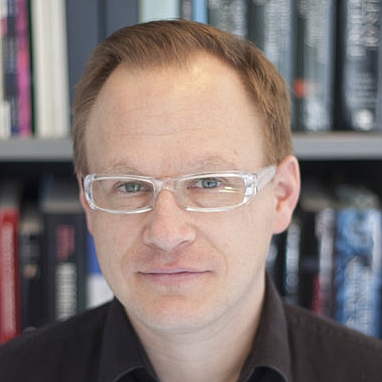Prof. Dr. Simon Hippenmeyer

How to generate a brain of correct size and with appropriate cell-type diversity during development is a fundamental but unsolved question. In many major brain regions, radial glia progenitor (RGP) cells are the main neural stem cells (NSCs) that produce excitatory and inhibitory neurons, as well as glial cells. RGPs follow a tightly orchestrated developmental program that when disrupted can result in severe brain malformations and neurodevelopmental diseases. The cellular and molecular mechanisms instructing RGP lineage progression at the individual cell level are however in most brain areas not well understood. To obtain in-depth insights into the above questions we probe RGP lineage progression at unprecedented single cell resolution in vivo by using the unique genetic strategy called MADM (Mosaic Analysis with Double Markers) (Contreras et al., 2021).
Focal points of interest
Recently, we focused much of our research effort on the mechanisms generating cell-type diversity during brain development. A major breakthrough was the determination of the role of genomic imprinting in the generation of specific cell-types, i.e. excitatory and inhibitory neurons, and astrocytes in cerebral cortex (including neocortex, hippocampus and olfactory bulb) (Laukoter et al., 2020). Based on these discoveries we plan to extend the analysis and probe the role of genomic imprinting in specific neuron types (including GABAergic hippocampal interneurons) also at the functional microcircuit level. In a more recent study (Cheung et al., 2024) we systematically analyzed the emergence of cell-type diversity in the superior colliculus and discovered an exceptional level of RGP multipotency. We found that individual SC RGPs can generate the full complement of excitatory and inhibitory neuron types in the SC. We will extend these analyses and aim to determine the molecular mechanisms that instruct the generation of appropriate relative amounts of SC excitatory and inhibitory neurons during development. In other lines of research, we will assess the genetic mechanisms involved in the generation of excitatory and inhibitory cell-type diversity based on phenotypic analysis upon genetic loss of function of selected candidate genes.
Technical proficiency and instrumentation
We implement genetic approaches (mainly MADM) enabling the investigation at true single cell level. MADM provides an unprecedented platform for single cell genetics, and high resolution phenotyping by morphological, physiological, transcriptomic/proteomic analysis among other applications and assays.
Aspirations for the next 5 years
The ultimate goal is to establish a definitive quantitative framework and mechanistic model of lineage progression in neural stem cells. We focus on the cellular and molecular mechanisms instructing the generation of excitatory and inhibitory neuron type diversity during development. Advances along our projects shall not only result in a conceptual understanding of the mechanisms generating cell-type diversity in general, but also allow novel insights into the fundamental question of why human brain development is so sensitive to the disruption of particular signaling pathways in the pathological condition.
References
- Cheung G, Pauler FM, Koppensteiner P, Krausgruber T, Streicher C, Schrammel M, Gutmann-Özgen N, Ivec AE, Bock C, Shigemoto R, Hippenmeyer S (2024) Multipotent progenitors instruct ontogeny of the superior colliculus. Neuron 112, 230–246.e11.
- Contreras X, Amberg N, Davaatseren M, Hansen AH, Sonntag H, Andersen L, Bernthaler T, Streicher C, Heger A, Johnson RL, Schwarz L, Luo L, Rülicke T, Hippenmeyer S (2021) A genome-wide library of MADM mice for single-cell genetic mosaic analysis. Cell Reports 35, 109274.
- Laukoter S, Pauler FM, Beattie R, Amberg N, Hansen AH, Streicher C, Penz T, Bock C, Hippenmeyer S (2020) Cell-type specificity of genomic imprinting in cerebral cortex. Neuron 107, 1160–1179.e9.





